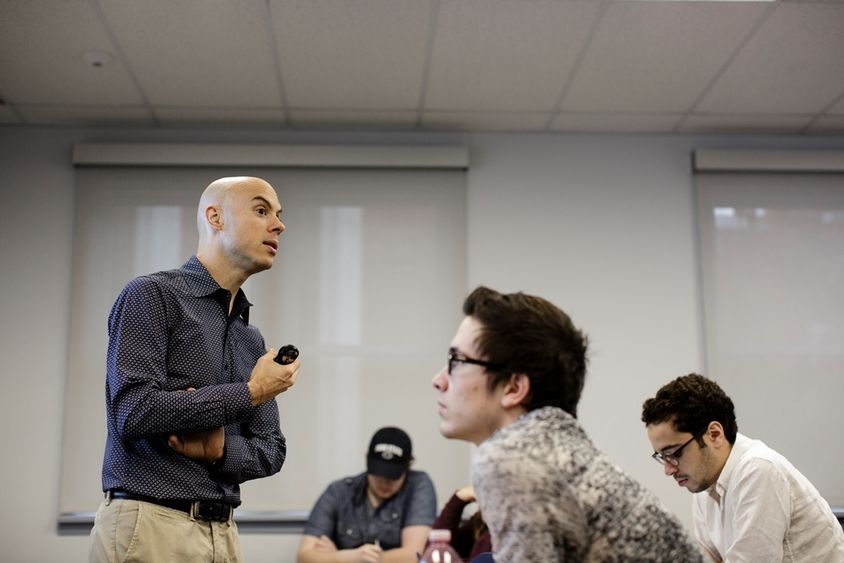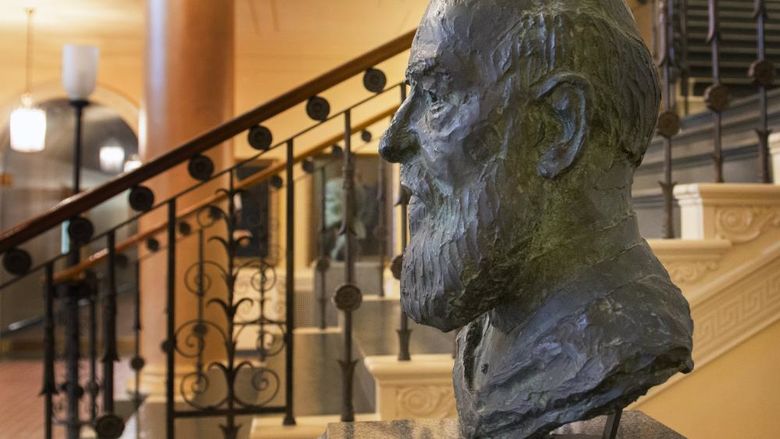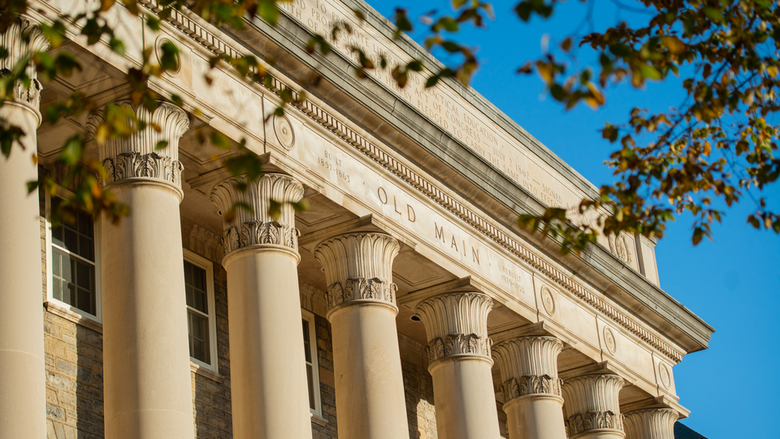
Associate Professor of History Justin Nordstrom teaches a class. He has recently released “Aunt Sammy’s Radio Recipes: The Original 1927 Cookbook and Housekeeper's Chat."
HAZLETON, Pa. — Before there were any celebrity chefs, there was Aunt Sammy. And now, thanks to a Penn State Hazleton professor’s recently released book, her story will be told to a new generation.
Associate Professor of History Justin Nordstrom is the editor of “Aunt Sammy’s Radio Recipes: The Original 1927 Cookbook and Housekeeper's Chat,” which he describes as a “critical reissue” of two different historical pieces with his writing connecting the two and adding historical context.
The book is based on a radio program hosted by “Aunt Sammy,” a fictional character created by the United States Department of Agriculture in the 1920s, and its companion cookbook, “Aunt Sammy’s Radio Recipes.”
“In the early days of radio, the USDA wanted to reach out to American households, especially home cooks. Similar to Betty Crocker, who was never a real person, the USDA created Aunt Sammy, who was understood to be the wife of Uncle Sam,” Nordstrom explained. The department used its research — this time for households and not farmers — to have the persona share information about cooking, housework and other domestic tasks.
“As the ’20s roared on, the USDA wanted to reach a broader audience,” Nordstrom said. “They created Aunt Sammy’s character almost like a soap opera character. She had a family along with neighbors stopping by to ask her questions. Through stories and anecdotes, she was able to weave in stories and advice.”
The radio program was a massive success, attracting hundreds of thousands of listeners. But the USDA soon realized a potential problem — it was difficult for listeners to jot down recipes or tips they heard during the broadcast while managing a busy household at the same time. The department developed the cookbook in response and had a hard time keeping the book in stock.
Nordstrom said digital versions of the radio program transcripts have only recently become available, allowing him to combine both sides of Aunt Sammy while adding his own words and sharing historical perspective.
“I’m able to give historical insight and context, which I love to do, but it’s also a working cookbook. The book is meant to do both of those things at the same time,” he said.
To write the book, Nordstrom researched documents directed at American farmers from World War I and the 1920s, particularly those housed in USDA and National Agricultural Library archives. He also searched archives of the radio broadcast transcripts to pair them with parts of the cookbook.
“It was the radio part that made it special. As one of the earliest broadcasts, it was a really important moment. This brings together technology and food in a way that’s relevant today,” he said.
Nordstrom tried his hand at making several of the recipes and described them as generally bland but easy to make.
“What’s noticeable about these recipes is not their complexity but their normalcy and predictability. For the vast majority of recipes, anyone could pull the cookbook off the shelf and make them. All of them have accessible ingredients that we can still find today,” he explained.
“The USDA wanted the recipes to be accessible and inexpensive, with emphasis on what a busy housewife could get on the table. You can find something for almost every taste in this cookbook that’s almost 100 years old, which I think is pretty remarkable,” he said.
Published by the University of Arkansas as part of the Food and Foodways series that explores historical and contemporary topics in global food studies, the book is available on Amazon. Nordstrom also is the author of “Danger on the Doorstep: Anti-Catholicism and American Print Culture in the Progressive Era,” published in 2006.





